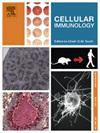Embracing multiple infection models to tackle Q fever: A review of in vitro, in vivo, and lung ex vivo models
IF 2.9
4区 医学
Q2 CELL BIOLOGY
引用次数: 0
Abstract
Multiple animal and cell culture models are employed to study pathogenesis of Coxiella burnetii, the causative agent of acute and chronic human Q fever. C. burnetii is a lung pathogen that is aerosolized in contaminated products and inhaled by humans to cause acute disease that can disseminate to other organs and establish chronic infection. Cellular models of Q fever include a variety of tissue-derived cell lines from mice and humans such as lung alveolar ex vivo cells. These models have the advantage of being cost-effective and reproducible. Similarly, animal models including mice and guinea pigs are cost-effective, although only immunocompromised SCID mice display a severe disease phenotype in response to Nine Mile I and Nine Mile II isolates of C. burnetii while immunocompetent guinea pigs display human-like symptoms and robust immune responses. Non-human primates such as macaques and marmosets are the closest model of human disease but are costly and largely used for adaptive immune response studies. All animal models are used for vaccine development but many differences exist in the pathogen’s ability to establish lung infection when considering infection routes, bacterial isolates, and host genetic background. Similarly, while cellular models are useful for characterization of host-pathogen mechanisms, future developments should include use of a lung infection platform to draw appropriate conclusions. Here, we summarize the current state of the C. burnetii lung pathogenesis field by discussing the contribution of different animal and cell culture models and include suggestions for continuing to move the field forward.
采用多种感染模型应对 Q 热:体外、体内和肺部体外模型综述。
我们采用多种动物和细胞培养模型来研究人类急性和慢性 Q 热的病原体烧伤蜱的致病机理。烧伤弧菌是一种肺部病原体,在受污染的产品中经气溶胶扩散,被人类吸入后引起急性疾病,并可扩散到其他器官,形成慢性感染。Q热的细胞模型包括来自小鼠和人类的各种组织衍生细胞系,如肺肺泡体外细胞。这些模型具有成本效益高和可重复的优点。同样,包括小鼠和豚鼠在内的动物模型也具有成本效益,不过只有免疫功能低下的 SCID 小鼠才会对 Nine Mile I 和 Nine Mile II 分离物的烧伤弧菌表现出严重的疾病表型,而免疫功能正常的豚鼠则会表现出类似人类的症状和强大的免疫反应。猕猴和狨猴等非人灵长类动物是最接近人类疾病的模型,但成本高昂,主要用于适应性免疫反应研究。所有动物模型都可用于疫苗开发,但考虑到感染途径、细菌分离物和宿主遗传背景,病原体建立肺部感染的能力存在许多差异。同样,虽然细胞模型有助于描述宿主-病原体机制,但未来的发展应包括使用肺部感染平台来得出适当的结论。在此,我们通过讨论不同动物和细胞培养模型的贡献,总结了烧伤桿菌肺部致病机理领域的现状,并提出了继续推动该领域发展的建议。
本文章由计算机程序翻译,如有差异,请以英文原文为准。
求助全文
约1分钟内获得全文
求助全文
来源期刊

Cellular immunology
生物-免疫学
CiteScore
8.20
自引率
2.30%
发文量
102
审稿时长
30 days
期刊介绍:
Cellular Immunology publishes original investigations concerned with the immunological activities of cells in experimental or clinical situations. The scope of the journal encompasses the broad area of in vitro and in vivo studies of cellular immune responses. Purely clinical descriptive studies are not considered.
Research Areas include:
• Antigen receptor sites
• Autoimmunity
• Delayed-type hypersensitivity or cellular immunity
• Immunologic deficiency states and their reconstitution
• Immunologic surveillance and tumor immunity
• Immunomodulation
• Immunotherapy
• Lymphokines and cytokines
• Nonantibody immunity
• Parasite immunology
• Resistance to intracellular microbial and viral infection
• Thymus and lymphocyte immunobiology
• Transplantation immunology
• Tumor immunity.
 求助内容:
求助内容: 应助结果提醒方式:
应助结果提醒方式:


